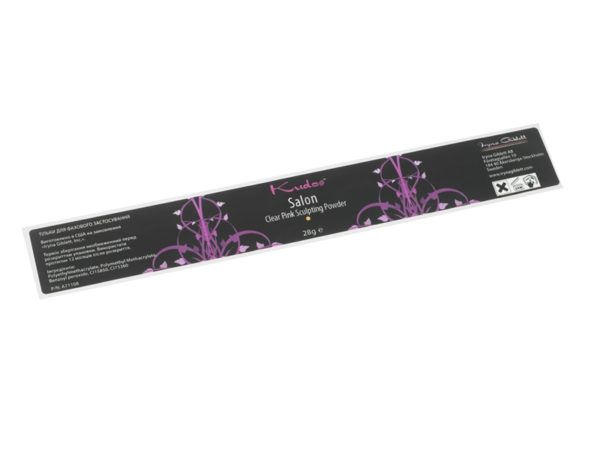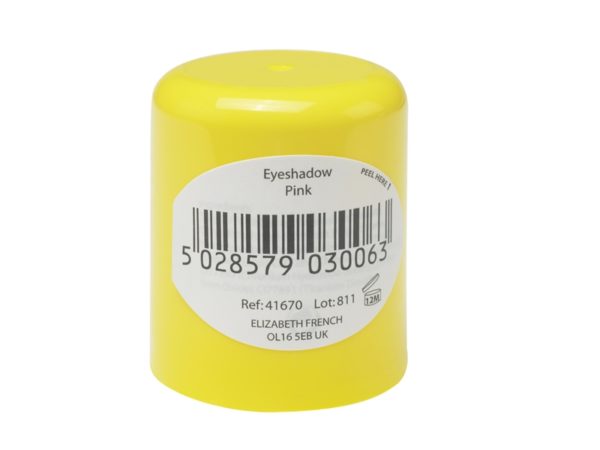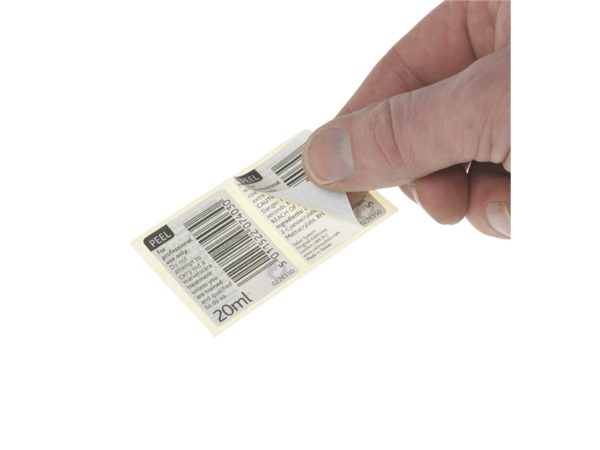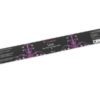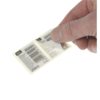Makeup Products
Home / Full Product Range / Homeopathy and Cosmetics Labels / Makeup Products
Makeup Labels FAQs
When it comes to labeling makeup products, the process typically involves several key steps. Here’s an overview of how makeup is labeled:
Design and compliance: Before proceeding with labeling, the label design should be created, ensuring it aligns with branding guidelines and complies with relevant regulations. This includes considering font size, legibility, required information, and any specific labeling requirements for cosmetic products.
Label content: The label should include essential information required by regulations. This typically includes the product name, net weight or volume, manufacturer or distributor details, ingredient list, usage instructions, warnings, and any required symbols or certifications.
Ingredient list: The ingredient list is a crucial part of makeup labels. It should clearly state the ingredients used in the product, following specific guidelines such as listing them in descending order of concentration. This helps consumers identify potential allergens or irritants and make informed choices.
Claims and certifications: If the makeup product meets specific criteria or standards, such as being cruelty-free, vegan, or organic, these claims can be included on the label. However, it’s important to ensure that such claims are supported by appropriate certifications or adhere to relevant guidelines.
Packaging symbols and recycling information: Labels may also include packaging symbols, such as recycling symbols, to indicate the type of materials used and encourage proper disposal. Additionally, expiration dates or batch codes can be included to ensure product safety and traceability.
Printing and application: Once the label design and content are finalized, the labels can be printed. Professional printing methods are commonly used to ensure high-quality and durable labels. Depending on the packaging material, labels can be applied using automated machinery or manually for smaller production runs.
Private label and white label options: In addition to labeling products for their own brands, companies may offer private label or white label services. Private label involves creating customized products for other companies, including unique labeling. White label products are pre-made and allow companies to apply their own branding and labels, providing a ready-to-sell solution.
Synthetic materials: Synthetic materials such as polypropylene (PP) or polyethylene (PE) are commonly used for makeup labels. They offer excellent durability, resistance to water and oils, and can withstand exposure to various environmental conditions. Synthetic labels are often chosen for their ability to maintain their quality and appearance over time.
Film labels: Films like BOPP (biaxially oriented polypropylene) or PET (polyethylene terephthalate) are ideal for printing makeup labels. They provide excellent clarity, resistance to water and chemicals, and can be printed with vibrant colors. Film labels are commonly used for high-end or luxury makeup products where a premium look and feel are desired.
Vinyl: Vinyl labels are known for their durability and resistance to moisture and abrasion. They can adhere well to various packaging materials, including glass, plastic, and metal. Vinyl labels are a popular choice for cosmetics that are exposed to challenging environments, such as those used in the bathroom or during travel.
Flexographic printing: Flexographic printing is a popular choice for high-volume label production. It involves creating a flexible printing plate with raised images or text, which is then transferred onto the label material. Flexographic printing is known for its efficiency, speed, and ability to print on a variety of materials, including paper and films.
Digital printing: Digital printing has gained significant popularity in recent years due to its flexibility and high-quality output. This process involves printing the labels directly from digital files, eliminating the need for printing plates. Digital printing allows for customization, variable data printing, and quick turnaround times, making it suitable for smaller label runs or when unique designs are required.
Offset printing: Offset printing is a traditional printing method that offers precise and consistent color reproduction. It involves transferring ink from a plate to a rubber blanket, which then transfers the ink onto the label material. Offset printing is well-suited for large-scale label production and can provide excellent print quality and color accuracy.
Screen printing: Screen printing involves applying ink through a mesh screen onto the label material. This process is particularly suitable for printing on various substrates, including textured or irregular surfaces. Screen printing can create vibrant colors and provide good durability, making it a preferred choice for specialized or custom effects on makeup labels.
Legal and regulatory requirements for makeup labels vary between countries and regions. Here’s a general overview of the requirements for makeup labels in the UK, the US, and the EU:
United Kingdom (UK):
The UK has its own set of regulations and requirements for cosmetic labeling. The key regulation is the Cosmetic Products Enforcement Regulations 2013, which aligns with the EU Cosmetics Regulation (discussed below). The main requirements include:
Product information: Makeup labels in the UK must provide essential product information, such as the product name, net weight or volume, name and address of the responsible person or company, and any necessary warnings or precautions.
Ingredient listing: The UK requires the ingredient list to be provided on makeup labels, following the International Nomenclature of Cosmetic Ingredients (INCI) system. Ingredients must be listed in descending order of weight, with potential allergens identified.
Safety assessments: Cosmetic products sold in the UK must undergo safety assessments to ensure they are safe for use. However, with the UK’s exit from the EU, UK-based companies now have the option to use the UKCA (UK Conformity Assessed) marking instead of the CE mark for product conformity.
United States (US):
In the US, the Food and Drug Administration (FDA) regulates cosmetics. While cosmetic labeling is primarily governed by the Federal Food, Drug, and Cosmetic Act (FD&C Act), specific labeling requirements are provided in the Fair Packaging and Labeling Act (FPLA) and the FDA Cosmetic Labeling Guide. Key requirements include:
Product identity: The label should include the product’s common or usual name, which must be prominent and conspicuous.
Net quantity of contents: Makeup labels in the US must provide accurate net weight or volume of the product.
Ingredients: Cosmetic labels must include an ingredient declaration listing ingredients in descending order of predominance. However, unlike the EU, the US does not require the use of the INCI system.
European Union (EU):
In the EU, cosmetics are regulated by the EU Cosmetics Regulation (Regulation (EC) No 1223/2009). The key requirements for cosmetic labeling in the EU include:
Product information: Makeup labels must provide product name, address of the responsible person, and the country of origin or import.
Ingredients: The EU requires the use of the INCI system for ingredient listing. All ingredients must be listed, including potential allergens. Additionally, certain ingredients are restricted or prohibited.
Safety assessment and notification: Cosmetic products sold in the EU must undergo a safety assessment by a qualified person. Additionally, certain products or ingredients may require notification to the European Commission through the Cosmetic Products Notification Portal (CPNP).
Please note that this is not legal advice.
Listing ingredients on makeup labels is a legal requirement in most countries to ensure consumer safety and provide transparency. Here’s how ingredients are typically listed on makeup labels:
Ingredient Listing Format:
Ingredients are usually listed in descending order of concentration, with the ingredient present in the highest amount listed first.
The International Nomenclature of Cosmetic Ingredients (INCI) system is widely used for ingredient names, which provides a standardized naming convention recognized internationally.
Ingredients commonly listed:
Ingredients that make up the main formulation of the product are typically listed. These can include water, emollients, oils, pigments, preservatives, thickeners, and fragrance components.
Commonly known or potential allergenic ingredients, as recognized by regulatory authorities, are often listed separately or highlighted to ensure consumer awareness.
Potential allergens and fragrance components:
Some countries require the identification of potential allergens in the ingredient list. For example, the EU mandates the labeling of 26 fragrance allergens if they exceed a certain concentration in leave-on products.
Fragrance components are generally listed as “parfum/fragrance” on labels to protect proprietary fragrance formulations.
Exceptions and trade secrets:
Certain ingredients, such as those protected as trade secrets or confidential business information, may be exempt from specific disclosure requirements. However, this exemption typically applies to specific authorized bodies or agencies, not the general public.
Legal requirement:
In many countries, including the United States (under the FDA) and the European Union, it is a legal requirement to list cosmetic ingredients on product labels.
The purpose of ingredient listing is to inform consumers about the contents of the product, allow them to make informed choices, and identify potential allergens or irritants.
It’s worth noting that specific regulations may vary between countries and regions, and the requirements for ingredient listing can evolve over time. It’s crucial for cosmetic manufacturers to stay updated with the latest regulations in their target markets to ensure compliance and consumer safety.
Listing ingredients on makeup labels is a legal requirement in most countries to ensure consumer safety and provide transparency. Here’s how ingredients are typically listed on makeup labels:
Ingredient Listing Format:
Ingredients are usually listed in descending order of concentration, with the ingredient present in the highest amount listed first.
The International Nomenclature of Cosmetic Ingredients (INCI) system is widely used for ingredient names, which provides a standardized naming convention recognized internationally.
Ingredients commonly listed:
Ingredients that make up the main formulation of the product are typically listed. These can include water, emollients, oils, pigments, preservatives, thickeners, and fragrance components.
Commonly known or potential allergenic ingredients, as recognized by regulatory authorities, are often listed separately or highlighted to ensure consumer awareness.
Potential allergens and fragrance components:
Some countries require the identification of potential allergens in the ingredient list. For example, the EU mandates the labeling of 26 fragrance allergens if they exceed a certain concentration in leave-on products.
Fragrance components are generally listed as “parfum/fragrance” on labels to protect proprietary fragrance formulations.
Exceptions and trade secrets:
Certain ingredients, such as those protected as trade secrets or confidential business information, may be exempt from specific disclosure requirements. However, this exemption typically applies to specific authorized bodies or agencies, not the general public.
Legal requirement:
In many countries, including the United States (under the FDA) and the European Union, it is a legal requirement to list cosmetic ingredients on product labels.
The purpose of ingredient listing is to inform consumers about the contents of the product, allow them to make informed choices, and identify potential allergens or irritants.
Safety information plays a crucial role in ensuring consumer safety and promoting responsible use of makeup products. Here are some key safety information elements that are typically displayed on makeup labels:
Warnings and precautions: Makeup labels should include specific warnings and precautions to inform consumers about potential risks or hazards associated with the product’s use. For example, warnings may include avoiding contact with eyes, discontinuing use if irritation occurs, or keeping the product out of reach of children.
Usage instructions: Clear and concise usage instructions help consumers understand how to properly apply and use the makeup product. This may include directions on application techniques, frequency of use, or specific areas where the product should or should not be used.
Storage instructions: Makeup labels often include storage instructions to ensure product integrity and longevity. This may include recommendations for storing the product in a cool, dry place, away from direct sunlight or extreme temperatures.
Batch or lot number: Including a batch or lot number on the label enables traceability and allows manufacturers to track and investigate any issues or concerns related to specific product batches.
Expiration date: Many makeup products have a shelf life or expiration date, indicating the period during which the product remains suitable for use. This information helps consumers determine whether the product is still safe and effective.
Contact information: Makeup labels should provide contact information, such as a customer service phone number or email address, through which consumers can reach out to the manufacturer or distributor with any questions, concerns, or feedback.
Labelservice are experienced suppliers of labels for makeup products such as foundations, lipsticks, eye shadows, eyeliners and mascara. All of our labels are printed fully bespoke to your exact specifications on a range of materials including white and clear PP, PE and vinyls. For protection or for aesthetic reasons they can be finished with matt, satin or gloss varnishes or laminations. Additional features can include gold or silver foil effects, embossing, fragranced inks, and raised tactile print.
The latest digital technology can also offer full colour metallic effect printing, which is an extremely cost effective method of producing stunning, eye catching product labels.
If space is at a premium we can also offer long or short run, multi sort peel and reveal labels.
Please contact us for further information or examples of our work.
Makeup Labels FAQs
When it comes to labeling makeup products, the process typically involves several key steps. Here’s an overview of how makeup is labeled:
Design and compliance: Before proceeding with labeling, the label design should be created, ensuring it aligns with branding guidelines and complies with relevant regulations. This includes considering font size, legibility, required information, and any specific labeling requirements for cosmetic products.
Label content: The label should include essential information required by regulations. This typically includes the product name, net weight or volume, manufacturer or distributor details, ingredient list, usage instructions, warnings, and any required symbols or certifications.
Ingredient list: The ingredient list is a crucial part of makeup labels. It should clearly state the ingredients used in the product, following specific guidelines such as listing them in descending order of concentration. This helps consumers identify potential allergens or irritants and make informed choices.
Claims and certifications: If the makeup product meets specific criteria or standards, such as being cruelty-free, vegan, or organic, these claims can be included on the label. However, it’s important to ensure that such claims are supported by appropriate certifications or adhere to relevant guidelines.
Packaging symbols and recycling information: Labels may also include packaging symbols, such as recycling symbols, to indicate the type of materials used and encourage proper disposal. Additionally, expiration dates or batch codes can be included to ensure product safety and traceability.
Printing and application: Once the label design and content are finalized, the labels can be printed. Professional printing methods are commonly used to ensure high-quality and durable labels. Depending on the packaging material, labels can be applied using automated machinery or manually for smaller production runs.
Private label and white label options: In addition to labeling products for their own brands, companies may offer private label or white label services. Private label involves creating customized products for other companies, including unique labeling. White label products are pre-made and allow companies to apply their own branding and labels, providing a ready-to-sell solution.
Synthetic materials: Synthetic materials such as polypropylene (PP) or polyethylene (PE) are commonly used for makeup labels. They offer excellent durability, resistance to water and oils, and can withstand exposure to various environmental conditions. Synthetic labels are often chosen for their ability to maintain their quality and appearance over time.
Film labels: Films like BOPP (biaxially oriented polypropylene) or PET (polyethylene terephthalate) are ideal for printing makeup labels. They provide excellent clarity, resistance to water and chemicals, and can be printed with vibrant colors. Film labels are commonly used for high-end or luxury makeup products where a premium look and feel are desired.
Vinyl: Vinyl labels are known for their durability and resistance to moisture and abrasion. They can adhere well to various packaging materials, including glass, plastic, and metal. Vinyl labels are a popular choice for cosmetics that are exposed to challenging environments, such as those used in the bathroom or during travel.
Flexographic printing: Flexographic printing is a popular choice for high-volume label production. It involves creating a flexible printing plate with raised images or text, which is then transferred onto the label material. Flexographic printing is known for its efficiency, speed, and ability to print on a variety of materials, including paper and films.
Digital printing: Digital printing has gained significant popularity in recent years due to its flexibility and high-quality output. This process involves printing the labels directly from digital files, eliminating the need for printing plates. Digital printing allows for customization, variable data printing, and quick turnaround times, making it suitable for smaller label runs or when unique designs are required.
Offset printing: Offset printing is a traditional printing method that offers precise and consistent color reproduction. It involves transferring ink from a plate to a rubber blanket, which then transfers the ink onto the label material. Offset printing is well-suited for large-scale label production and can provide excellent print quality and color accuracy.
Screen printing: Screen printing involves applying ink through a mesh screen onto the label material. This process is particularly suitable for printing on various substrates, including textured or irregular surfaces. Screen printing can create vibrant colors and provide good durability, making it a preferred choice for specialized or custom effects on makeup labels.
Legal and regulatory requirements for makeup labels vary between countries and regions. Here’s a general overview of the requirements for makeup labels in the UK, the US, and the EU:
United Kingdom (UK):
The UK has its own set of regulations and requirements for cosmetic labeling. The key regulation is the Cosmetic Products Enforcement Regulations 2013, which aligns with the EU Cosmetics Regulation (discussed below). The main requirements include:
Product information: Makeup labels in the UK must provide essential product information, such as the product name, net weight or volume, name and address of the responsible person or company, and any necessary warnings or precautions.
Ingredient listing: The UK requires the ingredient list to be provided on makeup labels, following the International Nomenclature of Cosmetic Ingredients (INCI) system. Ingredients must be listed in descending order of weight, with potential allergens identified.
Safety assessments: Cosmetic products sold in the UK must undergo safety assessments to ensure they are safe for use. However, with the UK’s exit from the EU, UK-based companies now have the option to use the UKCA (UK Conformity Assessed) marking instead of the CE mark for product conformity.
United States (US):
In the US, the Food and Drug Administration (FDA) regulates cosmetics. While cosmetic labeling is primarily governed by the Federal Food, Drug, and Cosmetic Act (FD&C Act), specific labeling requirements are provided in the Fair Packaging and Labeling Act (FPLA) and the FDA Cosmetic Labeling Guide. Key requirements include:
Product identity: The label should include the product’s common or usual name, which must be prominent and conspicuous.
Net quantity of contents: Makeup labels in the US must provide accurate net weight or volume of the product.
Ingredients: Cosmetic labels must include an ingredient declaration listing ingredients in descending order of predominance. However, unlike the EU, the US does not require the use of the INCI system.
European Union (EU):
In the EU, cosmetics are regulated by the EU Cosmetics Regulation (Regulation (EC) No 1223/2009). The key requirements for cosmetic labeling in the EU include:
Product information: Makeup labels must provide product name, address of the responsible person, and the country of origin or import.
Ingredients: The EU requires the use of the INCI system for ingredient listing. All ingredients must be listed, including potential allergens. Additionally, certain ingredients are restricted or prohibited.
Safety assessment and notification: Cosmetic products sold in the EU must undergo a safety assessment by a qualified person. Additionally, certain products or ingredients may require notification to the European Commission through the Cosmetic Products Notification Portal (CPNP).
Please note that this is not legal advice.
Listing ingredients on makeup labels is a legal requirement in most countries to ensure consumer safety and provide transparency. Here’s how ingredients are typically listed on makeup labels:
Ingredient Listing Format:
Ingredients are usually listed in descending order of concentration, with the ingredient present in the highest amount listed first.
The International Nomenclature of Cosmetic Ingredients (INCI) system is widely used for ingredient names, which provides a standardized naming convention recognized internationally.
Ingredients commonly listed:
Ingredients that make up the main formulation of the product are typically listed. These can include water, emollients, oils, pigments, preservatives, thickeners, and fragrance components.
Commonly known or potential allergenic ingredients, as recognized by regulatory authorities, are often listed separately or highlighted to ensure consumer awareness.
Potential allergens and fragrance components:
Some countries require the identification of potential allergens in the ingredient list. For example, the EU mandates the labeling of 26 fragrance allergens if they exceed a certain concentration in leave-on products.
Fragrance components are generally listed as “parfum/fragrance” on labels to protect proprietary fragrance formulations.
Exceptions and trade secrets:
Certain ingredients, such as those protected as trade secrets or confidential business information, may be exempt from specific disclosure requirements. However, this exemption typically applies to specific authorized bodies or agencies, not the general public.
Legal requirement:
In many countries, including the United States (under the FDA) and the European Union, it is a legal requirement to list cosmetic ingredients on product labels.
The purpose of ingredient listing is to inform consumers about the contents of the product, allow them to make informed choices, and identify potential allergens or irritants.
It’s worth noting that specific regulations may vary between countries and regions, and the requirements for ingredient listing can evolve over time. It’s crucial for cosmetic manufacturers to stay updated with the latest regulations in their target markets to ensure compliance and consumer safety.
Listing ingredients on makeup labels is a legal requirement in most countries to ensure consumer safety and provide transparency. Here’s how ingredients are typically listed on makeup labels:
Ingredient Listing Format:
Ingredients are usually listed in descending order of concentration, with the ingredient present in the highest amount listed first.
The International Nomenclature of Cosmetic Ingredients (INCI) system is widely used for ingredient names, which provides a standardized naming convention recognized internationally.
Ingredients commonly listed:
Ingredients that make up the main formulation of the product are typically listed. These can include water, emollients, oils, pigments, preservatives, thickeners, and fragrance components.
Commonly known or potential allergenic ingredients, as recognized by regulatory authorities, are often listed separately or highlighted to ensure consumer awareness.
Potential allergens and fragrance components:
Some countries require the identification of potential allergens in the ingredient list. For example, the EU mandates the labeling of 26 fragrance allergens if they exceed a certain concentration in leave-on products.
Fragrance components are generally listed as “parfum/fragrance” on labels to protect proprietary fragrance formulations.
Exceptions and trade secrets:
Certain ingredients, such as those protected as trade secrets or confidential business information, may be exempt from specific disclosure requirements. However, this exemption typically applies to specific authorized bodies or agencies, not the general public.
Legal requirement:
In many countries, including the United States (under the FDA) and the European Union, it is a legal requirement to list cosmetic ingredients on product labels.
The purpose of ingredient listing is to inform consumers about the contents of the product, allow them to make informed choices, and identify potential allergens or irritants.
Safety information plays a crucial role in ensuring consumer safety and promoting responsible use of makeup products. Here are some key safety information elements that are typically displayed on makeup labels:
Warnings and precautions: Makeup labels should include specific warnings and precautions to inform consumers about potential risks or hazards associated with the product’s use. For example, warnings may include avoiding contact with eyes, discontinuing use if irritation occurs, or keeping the product out of reach of children.
Usage instructions: Clear and concise usage instructions help consumers understand how to properly apply and use the makeup product. This may include directions on application techniques, frequency of use, or specific areas where the product should or should not be used.
Storage instructions: Makeup labels often include storage instructions to ensure product integrity and longevity. This may include recommendations for storing the product in a cool, dry place, away from direct sunlight or extreme temperatures.
Batch or lot number: Including a batch or lot number on the label enables traceability and allows manufacturers to track and investigate any issues or concerns related to specific product batches.
Expiration date: Many makeup products have a shelf life or expiration date, indicating the period during which the product remains suitable for use. This information helps consumers determine whether the product is still safe and effective.
Contact information: Makeup labels should provide contact information, such as a customer service phone number or email address, through which consumers can reach out to the manufacturer or distributor with any questions, concerns, or feedback.
Labelservice are experienced suppliers of labels for makeup products such as foundations, lipsticks, eye shadows, eyeliners and mascara. All of our labels are printed fully bespoke to your exact specifications on a range of materials including white and clear PP, PE and vinyls. For protection or for aesthetic reasons they can be finished with matt, satin or gloss varnishes or laminations. Additional features can include gold or silver foil effects, embossing, fragranced inks, and raised tactile print.
The latest digital technology can also offer full colour metallic effect printing, which is an extremely cost effective method of producing stunning, eye catching product labels.
If space is at a premium we can also offer long or short run, multi sort peel and reveal labels.
Please contact us for further information or examples of our work.



